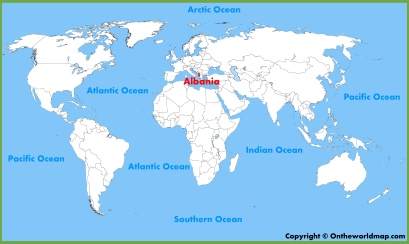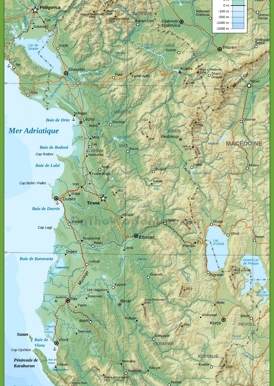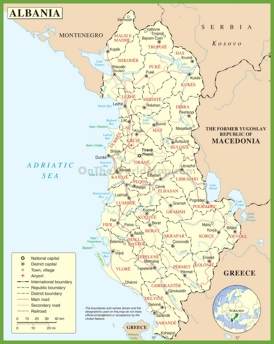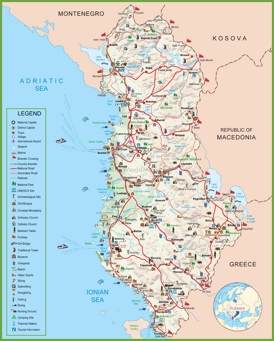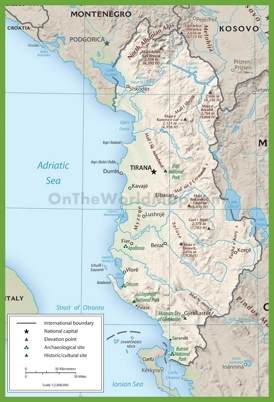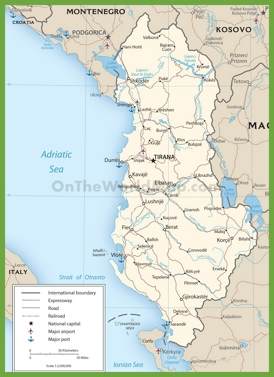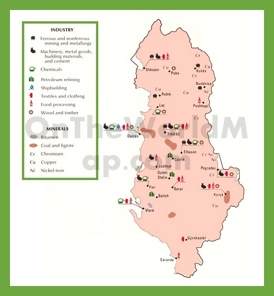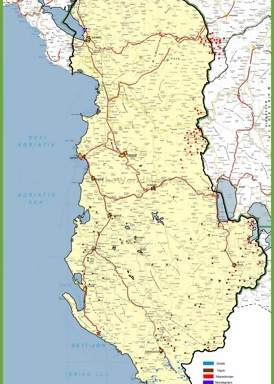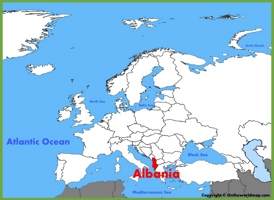Albania Map
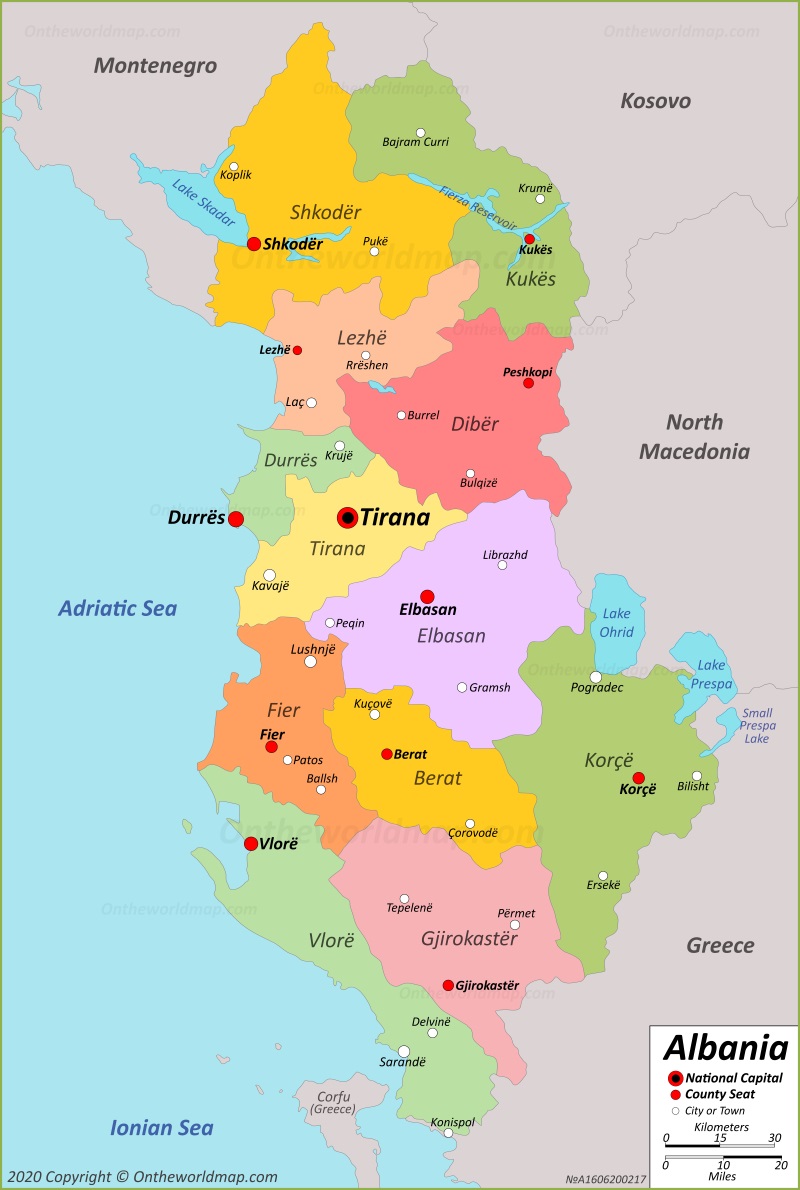
Description:
This map shows lakes, counties, county seats, major cities and governmental boundaries of countries in Albania.
Size: 800x1190px / 167 Kb
Author: Ontheworldmap.com
You may download, print or use the above map for educational, personal and non-commercial purposes. Attribution is required. For any website, blog, scientific research or e-book, you must place a hyperlink (to this page) with an attribution next to the image used.
Online Map of Albania
About Albania
Albania, located in Southeastern Europe, occupies a strategically important position on the Balkan Peninsula. The country borders Montenegro to the northwest, Kosovo (Serbia) to the northeast, North Macedonia to the east, and Greece to the south. The western border runs along the Adriatic Sea, while the southwestern border touches the Ionian Sea. Albania covers an area of about 28,748 square kilometers and has a varied landscape including mountains, coastline and fertile plains.
The capital and largest city of Albania is Tirana. Located in the central part of the country, Tirana is the political, economic and cultural center. Other significant cities include Durres, a key port city on the Adriatic coast; Shkoder, known for its historical significance and proximity to Lake Shkoder; and Vlore, an important coastal city historically associated with Albanian independence.
Tourism in Albania has been growing in recent years, attracting visitors with its natural beauty and historical attractions. The Albanian Riviera offers stunning beaches along the Ionian Sea, popular with tourists seeking sun and relaxation.
The UNESCO World Heritage Sites of Butrint, an ancient Greek and Roman city, and Gjirokaster, known for its Ottoman architecture, attract those interested in history and culture. In addition, the Albanian Alps offer opportunities for hiking and discovering unspoiled nature.
The Facts:
Capital: Tirana.
Area: 11,100 sq mi (28,748 sq km).
Population: ~ 2,800,000.
Largest cities: Tirana, Durrës, Vlorë, Elbasan, Shkodër, Kamëz, Fier, Korçë, Berat, Lushnjë, Pogradec, Kavajë, Gjirokastër, Fushë-Krujë, Sarandë, Laç, Leskovik, Kukës, Sukth, Patos, Lezhë, Mamurras, Peshkopi, Kuçovë, Krujë, Vorë, Burrel, Rrëshen, Milot, Divjakë, Gramsh, Bulqizë, Vau i Dejës, Shëngjin, Klos, Ballsh, Shijak, Ura Vajgurore, Rrogozhinë.
Official language: Albanian.
Currency: Lek (ALL).
Counties of Albania: Berat, Dibër, Durrës, Elbasan, Fier, Gjirokastër, Korçë, Kukës, Lezhë, Shkodër, Tirana, Vlorë.
Driving side: right.
Calling code: +355.
Internet TLD: .al.
Time zone: UTC+1 (CET), UTC+2 (CEST).
Google Map of Albania
Geography of Albania
Geographically, Albania is a mountainous area with the Albanian Alps in the north and other mountain ranges such as Korab and Pindus. The coastal areas and river valleys are rich in fertile land for agriculture. Albania's coastline has a Mediterranean climate characterized by mild, wet winters and hot, dry summers. Inland, especially in the mountainous areas, the climate is more continental, with colder winters and more snow.
Brief History of Albania
Albania's historical roots go back to ancient times, when it was inhabited by Illyrian tribes. In the 2nd century BC, the region came under Roman rule and then became part of the Byzantine Empire. During the Middle Ages, Albania experienced periods of independence and foreign domination, including the establishment of the Principality of Arbanon and then Ottoman rule in the 15th century.
Albania declared independence from the Ottoman Empire in 1912, an important turning point in its history. The 20th century saw political upheavals, including a brief monarchy, Italian occupation during World War II, and the establishment of a communist regime under Enver Hoxha. The fall of communism in 1991 led to a transition to democracy and a market economy.
Today, Albania continues to develop its economy and infrastructure, seeking integration into European and international institutions. In 2009, the country became a member of NATO and seeks to join the European Union. Despite challenges such as economic development and political reform, Albania continues to strive for stability and growth.

